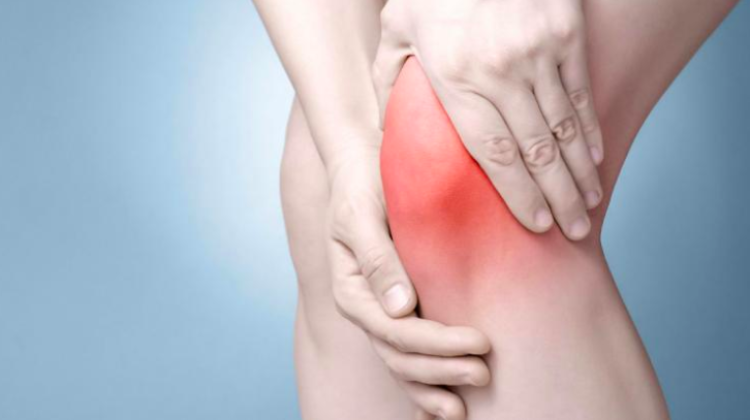Pain can be 'controlled', Polish researchers show
 Credit: Adobe Stock
Credit: Adobe Stock
How we focus our attention can affect the level of pain we perceive; for example, if someone focuses only on a specific part of their pain when evaluating their pain, they feel the pain as markedly weaker. The research author is a Polish scientist.
Each person has a pain sensation system that has different properties, including some interesting features. One of them is spatial summation. 'The idea is simple: if we irritate a smaller area of the body, there will be less pain; if we increase this area, the pain sensation will also increase, despite the fact that the intensity of irritation remains unchanged', says Dr. Wacław M. Adamczyk from the Pain Research Laboratory of the Academy of Physical Education in Katowice.
It is not that simple, however, because this summation does not result from arithmetic. 'It's not that when we stimulate 2 sq cm of body surface, the pain is 2 out of 10, and when we start to stimulate 4 sq cm, the pain will increase to exactly 4 out of 10. In fact, in the latter case the increase will be very small', he adds and explains that we need this mechanism every day, and the more efficiently it works, the better it is for a person.
'This allows us to feel and respond to pain (even when the injury is not very extensive), which is an important warning signal for the body', the scientist explains. 'Spatial summation can be observed when someone pulls a coffee from the machine. We instinctively grip the cup right at the edge to reduce the surface of the body subjected to thermal stimulation. This reduces spatial summation and pain as a result'.
Dr. Adamczyk, who is currently a postdoctoral fellow at Cincinnati Children's Hospital Medical Center, is the lead author of a study on spatial tuning of pain in the context of attention. The publication concerning the study was prepared in collaboration between the Academy of Physical Education in Katowice and the facility in Cincinnati; it was published in The Journal of Pain.
FOCUS ON THE PAIN, IT WILL HELP
The goal of the researchers was to investigate whether and how the spatial summation of pain changes depending on attention. They designed an experiment, in which participants (a total of 40 people: 20 women and 20 men) dipped their hand in cold water at a pain-inducing temperature for 60 seconds. They were then asked to rate how much pain they felt in their entire hand (on a scale of 0 to 100).
In the next phase of the experiment, the researchers instructed participants to immerse only half of their hands in water, which was tantamount to eliminating half of the irritating stimulus. Upon completion of this phase, the other half of the hand was immersed. After each immersion, the level of pain felt was assessed.
It turned out that when the whole hand was immersed, the subjects experienced a slight increase in pain. 'It didn't surprise us because this effect had been proven before. We wanted to go further and assumed that attention could also play a role. So we gave the participants a task - by focusing their attention, they were asked to separate the painful area into two parts: a and b. It turned out that this attention control caused the pain to decrease significantly. So much so that it eliminated the effect of spatial summation', emphasises the scientist from the Academy of Physical Education.
When the subjects focused only on a small part of the painful area, the pain was much weaker. 'The assumption was that focusing on a smaller part of the painful area would cause the nervous system to apply a +filter+, as it would try to shut out all peripheral sensations and focus only on that one area. And that was exactly what happened. This means that even if the participants focused their attention only on a fragment of the painful area, the effect of spatial summation of pain was effectively removed', explains Dr. Adamczyk.
COCTAIL PARTY EFFECT
What does it mean? 'First, we have an analogy with another perception effect that we know from the auditory system. It is the so-called cocktail party effect. It consists in the fact that a person in a noisy environment is able to pick out, for example, their name from this noise; they can filter it out from all the other sounds around it. It turns out that the pain system can be similar', says Dr. Adamczyk.
In his opinion, this is a very interesting issue, because so far, in the context of alleviating the sensation of pain, the idea was to distract rather than focus properly. It is common, for example, to distract a child with conversation or electronic devices during painful medical procedures.
'The available literature indicates that there is no strong evidence that distraction can actually significantly relieve pain. And we have shown that the situation is quite opposite: not only distraction does not work, but also appropriate focusing of attention helps to reduce pain sensations', emphasizes the author of the study.
Dr. Adamczyk explains how these results can be used in practice. 'For example, imagine you feel pain in an area of 30 sq. cm. The task is to mentally divide this area into 30 parts, each of 1 sq. cm, and pay attention to how strong the pain is in only one of them. And then you can even try to focus on even smaller fragments. Such training can be a very effective and simple way to bring relief to people struggling with chronic pain', he says.
HOPE FOR PATIENTS
Dr. Adamczyk emphasises that the most important implication of this study is the possibility of real help for patients. 'For example, we have a patient complaining of back pain. The doctor or physiotherapist asks how strong the pain is, but never quite knows what the patient will be guided by when answering: assessing all the pain in the body, or focusing only on the sensations from the most tender area. Thanks to this study, we know that with the latter option, pain may be completely underestimated. That by focusing on a small area, the patient has largely eliminated it. In such a situation, the doctor may make an inadequate diagnosis or select an inadequate dose of the drug, because the pain was disproportionately lower than if the doctor had emphasized that the question concerns the total discomfort felt in the body. So it turns out that you need to know how to formulate a question for it to be useful in clinical practice', the scientist concludes. (PAP)
PAP - Science in Poland, Katarzyna Czechowicz
kap/ bar/
tr. RL
Przed dodaniem komentarza prosimy o zapoznanie z Regulaminem forum serwisu Nauka w Polsce.



















